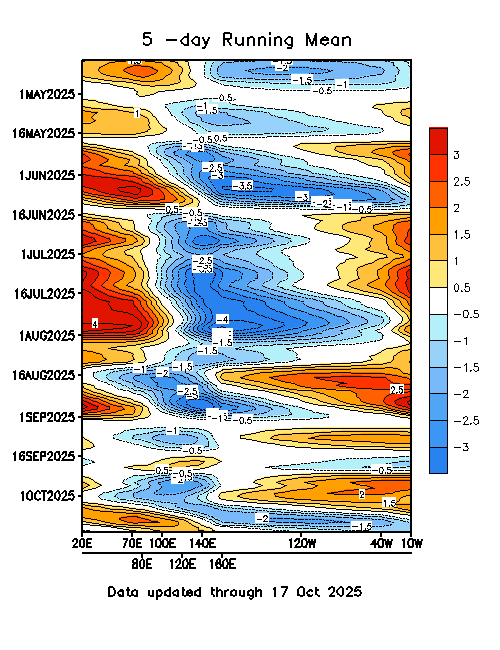Summary - El Niño Chances Remain Elevated.
The chance of an El Niño this year is estimated at between 30 and 50%, which means that the risk is around double what may normally be expected at this time of year. The situation is further complicated by the differences between international computer predictions for the next eight months. The majority of models predict neutral conditions during this period with temperatures somewhat warmer than average, while about one-third of them predict an El Niño. The POAMA model, run at the Bureau of Meteorology, is strongly in favour of an El Niño event developing during the southern autumn and winter. The lack of consensus among the computer models is evidence for why the March to June period is known as the "predictability" barrier: model skill is at its lowest predicting across this span of months.
The latest observations of ocean temperatures, wind, cloud and atmospheric pressure are inconclusive with no clear trends apparent. The "Kelvin wave" of subsurface warming that has been tracked since February, has reached the coast of South America but with little response in surface temperatures in the eastern Pacific as yet. A modest level of cooling has occurred in the western to central tropical Pacific during the past fortnight. However, the Kelvin wave has certainly increased the heat content of the tropical Pacific, and hence provided some "pre-conditioning" of the tropical Pacific for further warming. Another moderate to strong Westerly Wind Burst (WWB) has reached the western Pacific and is expected to produce another Kelvin wave of subsurface warming. Subsurface warming is very important in the development of a basin-wide El Niño, so this latest WWB will be monitored closely, especially as it is occurring in the southern autumn, the critical time of year for El Niño development.
Apart from the WWB, the Trade Winds have been mostly a little stronger than normal during the previous two weeks. Cloudiness around the dateline has been above average so far in April, and the 30-day SOI value has been falling - it currently stands at –3.
Sub-Surface Sea Temps, 900kb

http://www.bom.gov.au/climate/enso/











